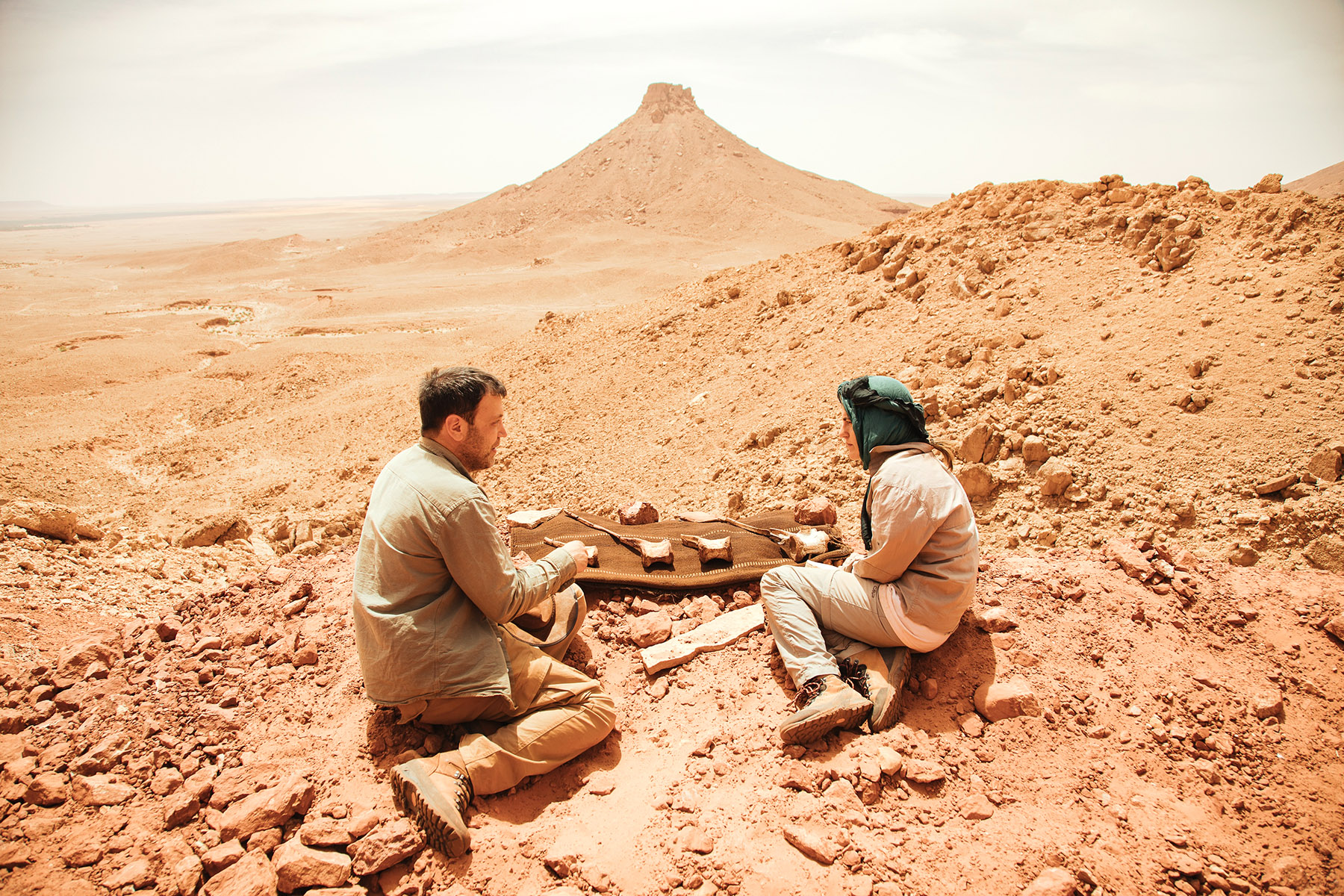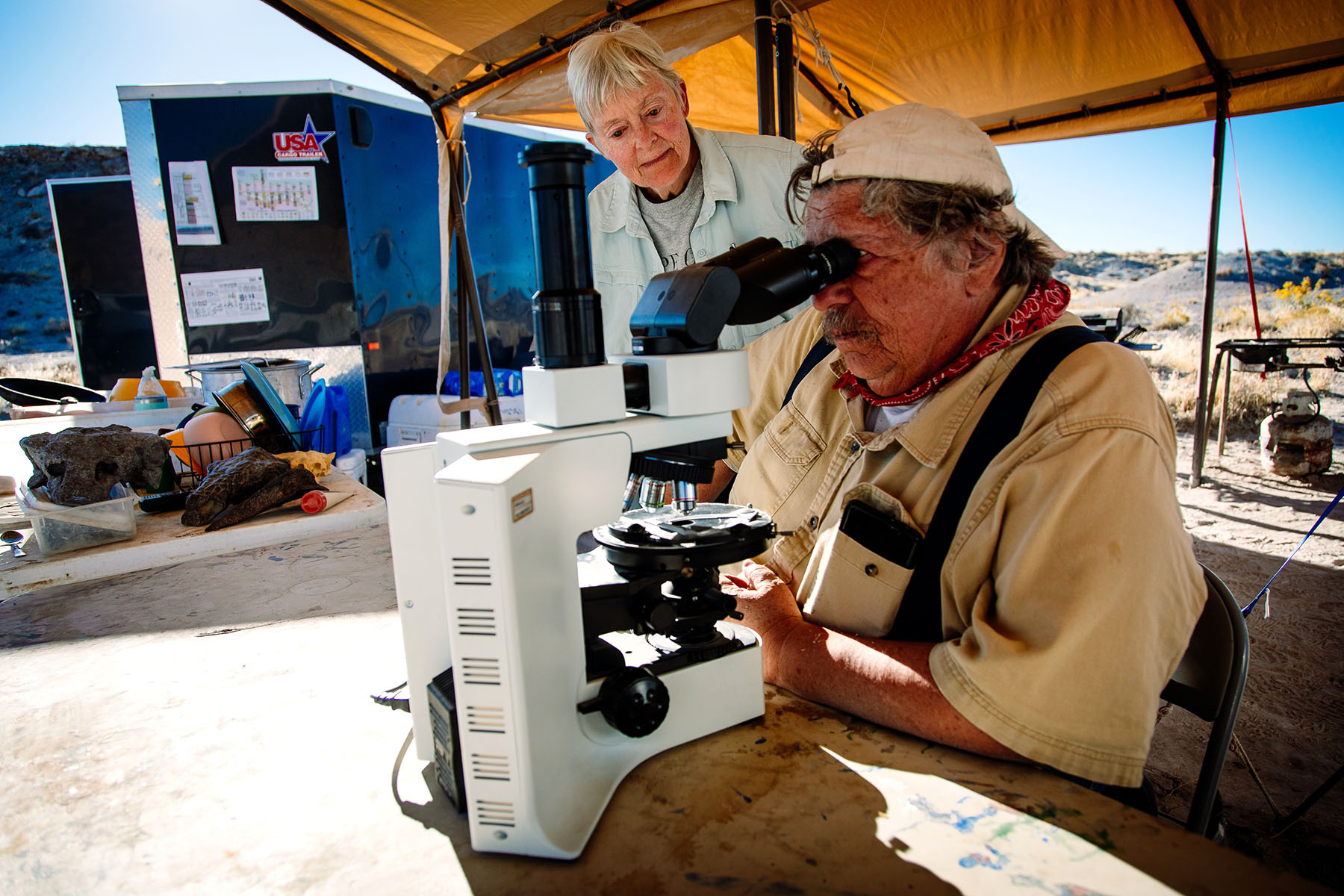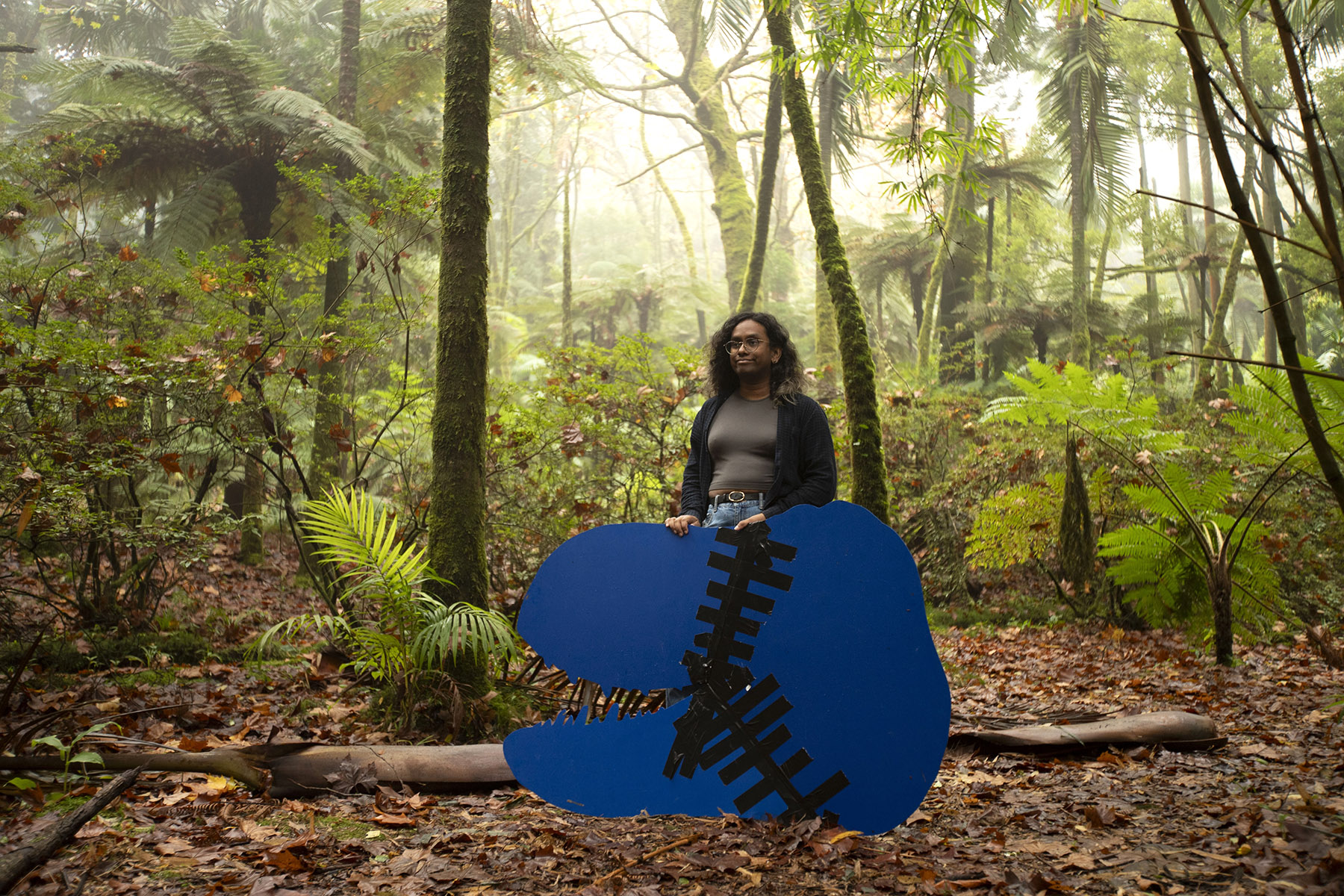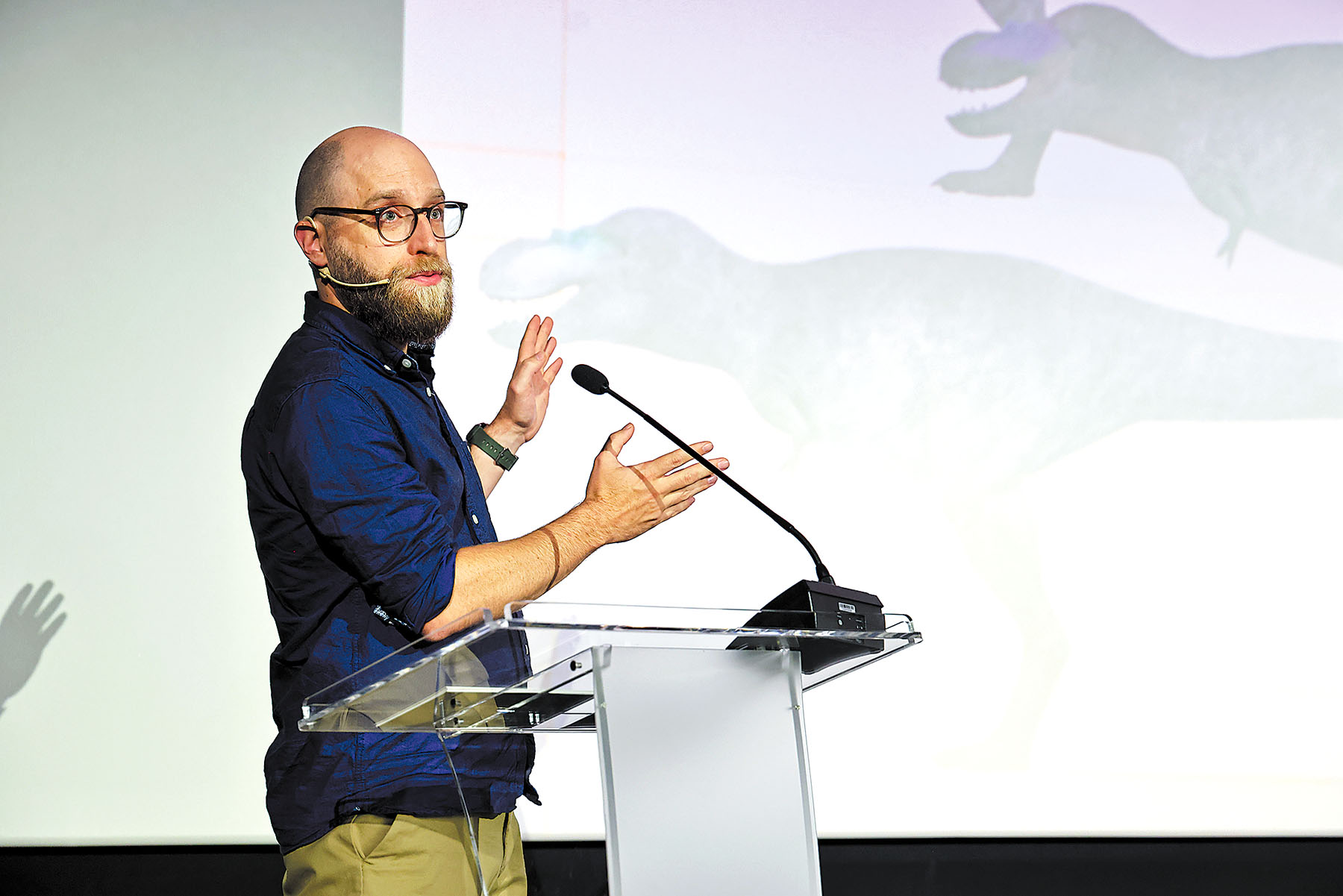New series incorporates scientific findings of past two decades to give BBC's iconic TV show a fresh look, Xu Fan reports.

Twenty-five years after it first captivated global audiences, the landmark BBC documentary Walking with Dinosaurs has returned with a new six-episode series, once again capturing the imagination of Chinese viewers with its vivid portrayal of prehistoric life.
Narrated by British actor Bertie Carvel, a two-time Laurence Olivier Award winner, the new series has been available for streaming in China since May 28 — both on China Central Television's two channels specializing in geographical and cultural content, and the digital platform iQiyi — bringing state-of-the-art visual storytelling and scientific insight to a new generation of fans.
Spanning 84 million years of Earth's history, when the planet was dominated by the roaming giants, the documentary embarks on a globe-trotting journey to reimagine the lives of six different dinosaurs, including a teenage Albertosaurus, a young Pachyrhinosaurus, and a colossal, long-necked Lusotitan.
READ MORE: Walking among prehistoric giants
From the windswept sands of the Sahara Desert and the dramatic landscapes of the badlands of Utah in the United States, to the lush forests of Canada and the rugged hills of Portugal, each 50-minute episode features one protagonist. For example, the first episode follows an orphaned baby Triceratops as it encounters a fearsome Tyrannosaurus rex, while the second part imagines the heartwarming parenting of a Spinosaurus — a newcomer to fatherhood.

First airing in 1999, Walking with Dinosaurs became the most-watched science program in British television history during the 20th century, winning multiple honors, including three Primetime Emmy Awards and an Annie Award.
Thomas Scott, head of development at BBC Studios Science Unit, recalls watching the 1999 program when he was a 14-year-old junior high school student, with the show becoming one of the key reasons he fell in love with these mysterious prehistoric creatures.
"It's such an iconic series in the UK and around the world. There have been so many new discoveries, and CGI (computer-generated imagery) has advanced so much that you can now bring these dinosaurs to life in new and exciting ways," Scott shared with China Daily during a recent interview in Beijing.
In an attempt to balance scientific authenticity and artistic appeal, the new series adopts a more relatable approach to unfolding each episode — featuring a team of paleontologists excavating fossils of the protagonist dinosaurs in the locations where the remains are discovered.
For instance, the baby Triceratops' fossils were unearthed in Montana in the US, the remains of a Gastonia that lived 130 million years ago were discovered in the desert of Utah, and a young Albertosaurus was found in the Horseshoe Canyon Formation in Alberta, Canada.

Scott explains that by telling the story of dinosaurs while showcasing the work of paleontologists, the series reveals the process of science and how scientists have dedicated themselves to natural history research.
"Dinosaurs let us explore many questions about the natural world that we can't necessarily see today. When we look at the mass extinction of the dinosaurs, you can't see that in the same way in modern animals — you need to see it across millions of years in the past. So, you can understand the way the natural world works in different ways by looking back at the dinosaurs," he adds.
This concept — reimagining prehistoric creatures through the lens of how humans perceive modern animals — transforms dinosaurs, especially the most lethal species, challenging the initial impressions formed by Chinese audiences through Hollywood blockbuster films.
"I love all of the Jurassic World and Jurassic Park movies. Anything with a dinosaur in it, I will happily sit and watch! I think here you get a chance to understand them as real creatures and not just scary monsters. They're often just attacking people, roaring and doing aggressive things in the movies," says Scott.
"Whereas now, you get to see dinosaurs being affectionate, with some looking after their babies, and you start to understand them as animals. They are much more rounded creatures with different characteristics — moments of play and softness — that you haven't seen before. Hopefully, that makes this stand out among all the other dinosaur titles out there," he adds.

Recalling the project that began nearly three years ago, Scott reveals that creating CGI for each main dinosaur took around two and a half years, resulting in over 1,200 visual effects shots. Every detail — from skeletal structure and musculature to feather coloration — is driven by the latest paleontological research.
Chinese scientists' latest achievements in dinosaur archaeology have also played a helpful role. One example is the Utahraptor, a smart and deadly predator. In the 1999 version, it appeared featherless, but in the new edition, it is fully feathered. Scott explains that this change was inspired by paleontological discoveries in China, which suggest the Utahraptor likely had feathers in shades of red, white and black.
Interestingly, although the documentary is set in real outdoor environments, the "main characters" — the dinosaurs — are, after all, extinct. So the crew have to rely on staff members wearing specially designed suits — which could be easily replaced with digital models in post-production — to act as dinosaurs, or use props to simulate the presence of these prehistoric giants.
For instance, they used a cardboard cutout shaped like a dinosaur head mounted on a very tall pole with a tennis ball attached to indicate the dinosaur's height and the position of its eyes. They carried this setup during filming around the world.
"That wasn't the biggest challenge. The real challenge was going through airport security with all that gear — trying to explain it was just … awkward," Scott says with a laugh.

In addition, the crew had to re-create dinosaur sounds. Since crocodiles and birds are the closest living relatives of dinosaurs, they recorded a wide range of sounds from these animals in various habitats and states — including when they were angry, happy, hunting, or sleeping — and combined them to simulate the calls of dinosaurs heard in the program.
In one episode, to accurately depict the Spinosaurus interacting with water, the team commissioned a 3D-printed model of its head — nearly 2 meters long and weighing 8 kilograms — which they submerged and maneuvered in a river. The director even donned a wet suit to help guide the prop through the water.
Xing Lida, an associate professor at the China University of Geosciences (Beijing) — who first watched the 1999 Walking with Dinosaurs as a middle-school student — points out that humanity has only known about dinosaurs for about 200 years, despite their 160-million-year reign on Earth.
ALSO READ: Jurassic highway: Hundreds of dinosaur footprints found in UK quarry
"Take Triceratops as an example," the Chinese paleontologist says. "When its fossils were first discovered, some scientists actually thought it was a giant bison.
"Dinosaurs are inherently fascinating. You see children as young as 2 or 3 years old falling in love with them — they ignite imagination, stimulate young minds, and satisfy that endless childhood curiosity," he adds.
"But on a deeper level, studying dinosaurs isn't just about the past. It's part of humanity's eternal quest: Where did life begin? Where is it going? These creatures humble us. They make you realize life's grandeur — and how brief our own chapter in Earth's story truly is," Xing adds.
Xing says that the new Walking with Dinosaurs program incorporates the latest scientific discoveries of the past two decades. It gives audiences a clearer picture of the dinosaurs' colors, sounds, footprints, and even aspects like their diseases — revealing connections to modern birds and helping today's viewers better understand these ancient creatures that ruled the planet long before humans appeared.
Contact the writer at xufan@chinadaily.com.cn


